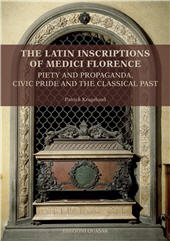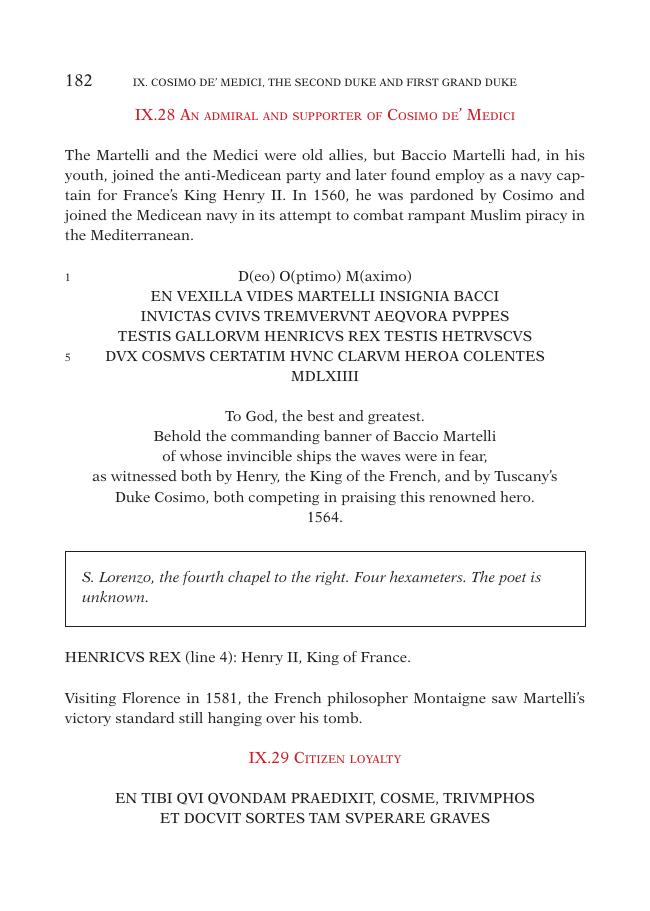The Latin Inscriptions of Medici Florence : piety and propaganda, civic pride and the classical past : texts, translations and commentaries
362 p. : ill. (chiefly col.).
Includes bibliographical references (pages 315-327) and indexes.
This is the first publication in English of a material of crucial historical importance. With its more than 220 Latin inscriptions, all transcribed, translated and, when deemed necessary, annotated, this handbook offers readers a work of reference and, at the same time, a walking or reading guide to a cross-section of Florentine history, from the mid-thirteenth century to the end of the Medici dynasty in the mid-eighteenth century, which also saw the demise of Latin as the preferred medium for addressing posterity. The emphasis is on monuments that carry crucial information about the city, its art and its key personalities in the truly golden periods of its history. For historians and art historians as well as for actual (no less than armchair) visitors, be it in groups or on their own, this anthology aims to inform, inspire, clarify and contextualise. Among the early highlights are inscriptions commemorating the father of Dante's Beatrice and the building of Ponte Vecchio, of the Bargello and the Duomo.
The book opens new perspectives by unravelling how the humanist study of classical epigraphy from the 1430s onwards made a lasting impact on the composition of Florentine inscriptions. This is a hitherto little acknowledged aspect of the so-called civic humanism. While moving away from a framework based upon Scripture and Christian values, civic humanism looked to ancient Rome for inspiration and models. Another focus is the way the rise to power of the Medici is mirrored in centralised efforts to give official epigraphy the suitably Augustan and imperial (as opposed to republican) formats. From 1537 onwards, Cosimo, the second Duke and, eventually, the first Grand Duke, literallyinscribedwhat was nowhiscity of residence, its walls, bridges, churches,mercati, squares and monuments – and this in a manner underlining his monarchical ambitions.
When the decline of the Grand Duchy set in, this was mirrored in a decline of the dynasty's epigraphical self-promotion, memorials in the end often focusing on past glories. What survived Florence's transition from merchant republic to monarchy was the pervasive and highly patriotic cult ofuomini illustri. Monuments to men of letters and art are numerous, this trend reaching its nadir with the memorials for the divine Michelangelo. In contrast, honours for the period's greatest scientist, Galilei Galileo, was at first vehemently opposed by the Church, his belated rehabilitation only taking place almost a century after the Inquisition had condemned his teachings [Pulisher's text].
Text in English; includes inscriptions in Latin with English translation.
-
Informazioni
ISBN: 9788854912014



